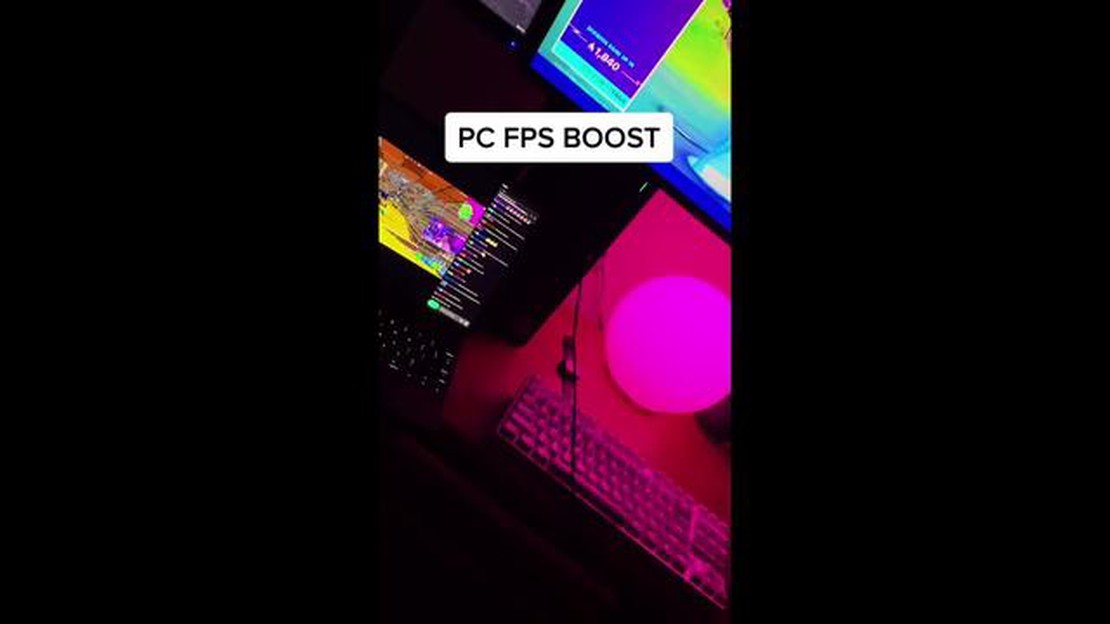Who Developed Call Of Duty Ghosts?
Who Made Call Of Duty Ghosts? Call of Duty Ghosts is a popular first-person shooter video game that was developed by Infinity Ward, with assistance …
Read Article
If you’re tired of lag and stuttering while playing Fortnite on your PC, we have the solution for you. Follow our expert tips and tricks to make Fortnite run fluidly on your computer, and experience the game like never before.
First, it’s important to optimize your PC for gaming. Make sure you have the latest graphics drivers installed, as outdated drivers can cause performance issues. Additionally, close any unnecessary background processes and programs to free up system resources for Fortnite.
Next, adjust your in-game settings. Lowering the graphics settings can significantly improve performance, especially on lower-end PCs. Experiment with different settings to find the right balance between visuals and performance.
Another tip is to disable any unnecessary overlays or recording software that may be running in the background. These tools can consume valuable system resources and impact game performance. Disabling them can free up resources and allow Fortnite to run more smoothly.
Lastly, consider upgrading your hardware if your PC is struggling to run Fortnite smoothly. Adding more RAM or a better graphics card can greatly improve performance. Consult with a computer expert to determine the best hardware upgrades for your specific needs.
By following these expert tips and tricks, you can make Fortnite go fluid on your PC and enjoy a seamless gaming experience. Don’t let lag and stuttering hold you back - optimize your system and dominate the game! [Fortnite how-to-do-that-fortnite-go-fluid-on-pc]
By following these steps, you can improve the performance of Fortnite on your PC and enjoy a smoother gaming experience.
Read Also: Learn How to Make a Sign in Minecraft - Step-by-Step Guide
One of the most important factors in making Fortnite run smoothly on your PC is to keep your graphics drivers up to date. Graphics drivers are software that allow your computer to communicate with your graphics card and display. Updating your graphics drivers ensures that you have the latest bug fixes, optimizations, and performance improvements that can greatly enhance your gaming experience.
Here are the steps to update your graphics drivers:
By keeping your graphics drivers up to date, you can optimize Fortnite performance and ensure a fluid gaming experience on your PC.
To make Fortnite run smoothly on your PC, it’s important to adjust your graphics settings. Here are some expert tips and tricks to help you optimize your gameplay:
Remember to monitor your FPS and adjust the settings accordingly. Every system is different, so it may require some trial and error to find the optimal settings for your PC. Good luck and happy gaming!
One simple way to make Fortnite run more smoothly on your PC is to close any unnecessary programs that are running in the background. These programs can take up valuable system resources and may cause lag or choppy gameplay.
Read Also: Easy Steps to Delete Genshin Impact Account on PS4 | Complete Guide
Here are a few steps you can take to close unnecessary programs:
By closing unnecessary programs, you can free up valuable system resources and allocate them to Fortnite, making the game run more smoothly on your PC.
To make Fortnite run smoothly on your PC, it’s important to optimize your system settings. Here are some steps you can follow:
By following these steps and optimizing your system settings, you can make Fortnite run more fluidly on your PC, providing you with a better gaming experience.
Yes, it is possible to play Fortnite on a low-end PC, but you may need to make some adjustments to improve performance. Lowering the graphics settings, closing unnecessary background programs, and optimizing your PC’s performance can help make Fortnite playable on a low-end PC. However, keep in mind that the gameplay experience may not be as smooth as on a high-end PC.
While there are third-party software and optimization tools available that claim to enhance Fortnite’s performance, it is recommended to use them with caution. Some of these software may not be reliable or may even be harmful to your PC. It is always best to follow expert tips and tricks, update your drivers, and optimize your PC’s performance using trusted and reputable methods.
Who Made Call Of Duty Ghosts? Call of Duty Ghosts is a popular first-person shooter video game that was developed by Infinity Ward, with assistance …
Read ArticleHow to slide kick a runaway boulder in Fortnite Running into a boulder rolling towards you can be a daunting experience in Fortnite. But fear not, as …
Read ArticleWhy Is Everything Among Us? Among Us is an online multiplayer game that has taken the gaming world by storm. Developed by InnerSloth, it was …
Read ArticleBest Buy coupons codes for August 2023 Welcome to our exclusive collection of Best Buy coupon codes for August 2023. Whether you’re looking to upgrade …
Read ArticleDark and Darker will hold one more playtest in April Prepare to venture into the shadows once again as the highly-anticipated playtest for Dark and …
Read ArticleCitizen Sleeper review When it comes to getting a good night’s sleep, finding the right mattress is key. With so many options available, it can be …
Read Article